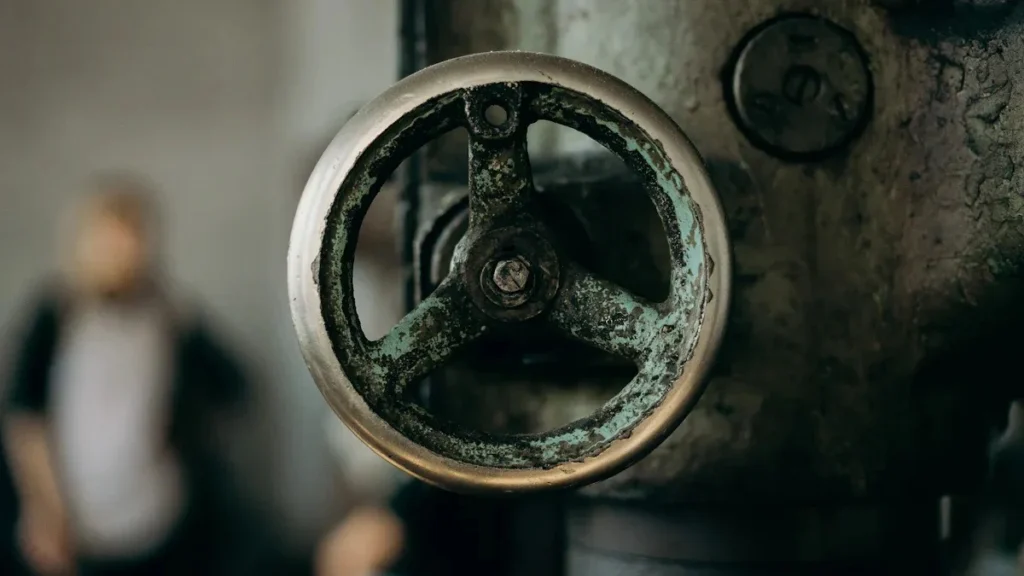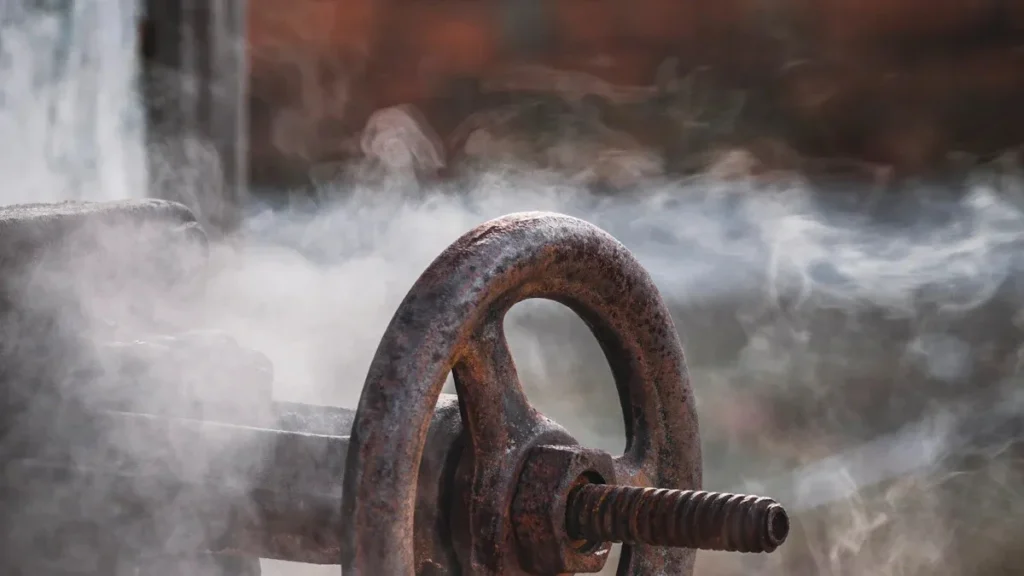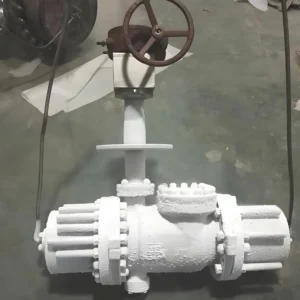
- If the valve opens less than 30%, the pressure drops a lot after it.
- The flow changes as the plug moves, especially when it is open just a little.
- Engineers use the flow coefficient (Cv) to see how much fluid goes through.
- The valve is best for steady and reliable control.
| Performance Feature | Description |
| Throttling Ability | Great for careful flow control |
| Pressure Drop | Higher than other valves because of the S-shaped path |
| Reliability | Lasts a long time and does not wear out fast |
The straight globe valve is special because it can do hard jobs and lets you adjust the flow very accurately.
Key Takeaways
- A straight globe valve changes how much fluid moves by lifting or lowering a globe-shaped plug. This lets you make small changes and keeps the seal tight.
- The main parts are the valve body, disc or plug, seat, stem, and handwheel or actuator. These parts are made to last long and are easy to fix.
- The valve is good for steady and exact flow control. It works well in high-pressure and high-temperature systems in many fields.
- Globe valves seal well and control flow very well. But they cause bigger pressure drops and need more room than simple valves like gate or ball valves.
- Picking the right valve size, material, and seal type helps it work better. This also makes the valve last longer and lowers downtime and repair costs.
Straight Globe Valve Basics

Definition
A straight globe valve is a control valve with a straight flow path. It has a globe-shaped body and a disc or plug that moves up and down. This up and down motion lets the valve control how much liquid or gas passes through. The straight globe valve can handle high pressure and tough jobs. Many industries use it because it gives very accurate control and seals tightly.
The straight globe valve is easy to put in and fix. The Z-body, also called the straight-through body, is the most common type. It has a simple shape and a seat that sits flat. This design makes it easier to make and fix. But, the S-shaped flow path inside the valve causes more pressure drop than other valves.
Note: Straight globe valves are often made from strong metals like stainless steel, brass, or cast iron. These metals help the valve last longer, even with steam or chemicals.
Main Components
A straight globe valve has several main parts. Each part helps the valve work well and last longer.
- Valve Body
The valve body is the main part. It holds all the other pieces together. The body can look different, but the Z-body is the most common for straight globe valves. The body’s material helps the valve handle heat and pressure. - Disc or Plug
The disc or plug moves up and down to open or close the valve. It touches the seat to stop flow or lifts up to let fluid go through. Some special designs use a spinning disc that cleans away dirt. This helps the valve last longer and need less fixing. - Seat
The seat is a ring inside the valve body. The disc presses on the seat to make a tight seal. Hardfacing alloys like stellite cover the seat to stop damage and wear. Over time, the seat can crack or peel, especially in hot steam systems. Checking and fixing the seat often keeps the valve working well. - Stem
The stem links the handwheel to the disc. When you turn the handwheel, the stem moves the disc up or down. The stem must be strong and straight so the valve works smoothly. - Handwheel or Actuator
The handwheel lets you open or close the valve by hand. Sometimes, an actuator takes the place of the handwheel. Actuators can be electric, pneumatic, or hydraulic. Each type has its own good points:- Electric actuators give very exact control and use less power.
- Pneumatic actuators work fast and do not mind water.
- Hydraulic actuators give strong force and last a long time.
| Component | Function | Durability Features |
| Valve Body | Main part, holds everything together | Made from strong metals for long life |
| Disc/Plug | Opens or closes to control flow | Spinning or self-fixing designs last longer |
| Seat | Seals with disc to stop flow | Hardfacing alloys stop cracks and wear |
| Stem | Moves disc up and down | Must stay straight and strong |
| Handwheel/Actuator | Turns stem to move disc | Automatic types work faster and easier |
- Many straight globe valves use special coatings and alloys to handle heat and pressure.
- Tests like dye checks and sound waves help find cracks or damage early.
- If a valve breaks, repair shops can fix or swap out bad parts to keep things safe.
Tip: Picking the right body type and metal for a straight globe valve can make it work better and last longer. For example, a Y-body drops less pressure, but a Z-body is easier to fix.
How It Works

Operation
A straight globe valve uses a simple way to control flow. The valve body holds the path for the fluid. The seat is where the disc seals to stop leaks. When you turn the handwheel, the stem moves the disc up or down. If you turn the handwheel left, the disc goes up and opens the valve. This lets fluid move through the valve. If you turn it right, the disc goes down and closes the valve. This stops the fluid from moving. Sometimes, electric or air-powered actuators move the stem instead of a person.
The stem and disc move in a straight line. This helps you make small, careful changes to the flow. Friction happens between the stem packing and the valve body as the disc moves. This friction changes how hard it is to turn the valve. Engineers test this friction to make sure the actuator can work well. The Z-pattern design lines up the inlet and outlet. This helps the fluid move better through the valve.
| Aspect | Description |
| Linear Motion Mechanism | Stem moves disc up/down for precise flow control |
| Valve Design | Straight pattern aligns ports, reduces pressure drop |
| Applications | Used in oil & gas, HVAC, power plants, water treatment |
| Advantages | Precise throttling, tight shut-off, easy maintenance |
| Selection Factors | Check pressure/temperature ratings, material compatibility |
Note: The disc and seat fit tightly together. This stops leaks, even when the pressure is high. That is why straight globe valves work well for tough jobs.
Flow Control
The straight globe valve lets you control how much fluid goes through. The disc moves up or down in small steps. This means you can change the flow a little at a time. Engineers use computers to study how the valve changes flow and pressure. These studies show that opening the valve changes the pressure drop and flow rate. If the valve is only a little open, the pressure drop can be as high as 73%. The flow coefficient, called Cv, helps pick the right valve size. Charts and graphs show how opening the valve changes flow and pressure.
- The valve controls both liquids and gases well.
- The design keeps the flow steady, even if the system changes fast.
- How the valve was used before can change how it works now. This is called hysteresis.
Tip: Always look at the Cv chart and pressure ratings before picking a straight globe valve for a new job.
Pros and Cons
Advantages
Globe valves have many good points in fluid systems. Their design lets you control flow very carefully. The disc moves up and down in small steps. This helps you change the flow a little at a time. This is great for jobs that need exact control, like chemical plants and power plants. The one-way flow path helps the valve seal well. Fluid pressure pushes the disc onto the seat. This stops leaks and meets strict rules for sealing and emissions.
These valves work with many fluids, like liquids, gases, and steam. They are strong and can handle high pressure and heat. Many industries use globe valves for hard jobs. They last a long time and work well in tough places. More people use electric globe valves now. They save energy and work with automation. New models have smart sensors. These sensors find leaks early and help stop downtime.
Tip: Globe valves meet API rules for sealing and emissions. This makes them a safe choice for important jobs.
Key Advantages:
- Excellent for precise flow control and throttling
- Superior sealing reduces leaks
- Durable under high pressure and temperature
- Suitable for a wide range of fluids
- Supports automation and smart monitoring
Disadvantages
Globe valves also have some downsides. The inside path makes the fluid turn. This causes resistance and turbulence. This design makes the pressure drop higher than other valves, like gate or ball valves. If you need to keep pressure high, this can be a problem. Globe valves are bigger and heavier. They need more space and can be harder to put in.
Taking care of them can be harder because they have more moving parts. They also need tight seals. Globe valves cost more than simple valves. If you need low pressure loss, you may need another valve or a special globe valve.
| Feature | Globe Valve | Gate Valve |
| Flow Control | Excellent for precise flow modulation | Poor for throttling, mainly on/off |
| Sealing | Superior sealing due to disc force | Good sealing but less effective |
| Pressure Drop | Higher pressure drop due to flow path | Lower pressure drop |
| Size and Weight | Heavier and bulkier | Lighter and more compact |
| Cost | More expensive due to complex design | Generally cheaper |
| Installation Space | Requires more horizontal space | Requires more vertical space |
Note: Globe valves spread out pressure loss better than butterfly valves. But the total pressure drop is still higher. Picking the right size and spot helps control these problems.
Applications
Common Uses
Many industries use globe valves to control flow safely. These valves help when systems need careful changes and strong seals. People pick them for jobs with high pressure or heat. The table below shows how different fields use globe valves and shares important facts:
| Application Area / Metric | Evidence / Statistical Data |
| Industries Using Globe Valves | Oil & Gas, Water Treatment, Power Generation, Chemical Processing |
| Market Growth | Expected 5.8% annual growth from 2024 to 2032 |
| Steam Systems | Globe valves control flow and maintain safety under high pressure |
| High-Pressure Pipelines | Valves maintain seal integrity even under extreme conditions |
| Water Treatment | Effective flow and pressure control for filtration and chemical dosing |
| Case Study on Valve Reliability | Study of 309 valves (164 globe valves) showed fixing worn seals improved reliability from 34.2% to 84.2% |
| Customer Retention Rate | 25% higher with improved valve services |
| Downtime Reduction | Up to 40% reduction with proper maintenance |
| Operational Efficiency Improvement | 30% increase with proper training |
| Repeat Purchases Growth | 15% increase with better customer care |
| Maintenance Cost Evidence | Nuclear plant valve replacements cost over $500,000 during shutdowns |
| Survey Data | 68% of chemical plant operators prioritize total ownership costs |
| Performance Data | Valves with advanced seals last 50% longer than older designs |
Industry reports list some main places where globe valves are used:
- Oil and gas
- Water and wastewater treatment
- Chemical processing
- Power generation
These fields like globe valves because they work well in hard jobs and last a long time.
Selection Tips
Picking the right globe valve keeps things safe and working well. Operators need to check the pressure and temperature for each job. The material must match the fluid, especially in chemical or steam systems. How often you fix the valve can change how long it lasts. Teaching workers to spot problems early can cut downtime by up to 40%.
Tip: Always look at the valve’s flow coefficient (Cv) and sealing type before buying. Valves with better seals can last 50% longer and save money on new parts.
Operators should also think about the total cost over time. A survey says 68% of chemical plant workers care about long-term costs, not just the price. Good support and easy-to-find parts help the valve work better and can make people buy again 15% more often.
Valve Comparison
Gate Valve
Gate valves work best for simple on-off control. They use a flat gate that moves up and down to block or allow flow. When open, the gate moves out of the way, and fluid flows straight through. This design causes very little pressure loss. Gate valves do not control flow well. They work best when fully open or fully closed. People often use gate valves in water supply lines and fire protection systems.
Key Features of Gate Valves:
- Good for on-off service
- Low pressure drop
- Not good for throttling or flow control
- Simple design and easy to maintain
Note: Gate valves can get stuck if used to control flow. The gate can wear out faster if it is not fully open or closed.
Ball Valve
Ball valves use a round ball with a hole in the middle. When the handle turns, the hole lines up with the pipe and lets fluid pass. Turning the handle blocks the flow. Ball valves open and close quickly. They seal tightly and work well for both liquids and gases. Ball valves do not control flow as well as globe valves. They work best for quick shut-off.
Ball Valve Highlights:
- Fast opening and closing
- Tight sealing, even under high pressure
- Not ideal for precise flow control
- Compact and lightweight
| Valve Type | Flow Control | Pressure Loss | Best Use Cases |
| Globe | Precise | Higher | Throttling, frequent adjustment |
| Gate | Poor | Very low | On-off, infrequent use |
| Ball | Limited | Very low | Quick shut-off, tight sealing |
Tip: Choose a globe valve for careful flow control. Pick a gate or ball valve for simple open-close needs.
A straight globe valve gives users strong control over flow and pressure. It works best in systems that need careful adjustments and tight seals. Many industries choose this valve for tough jobs with high pressure or heat.
- Check the fluid type and system needs before picking a valve.
- Look for strong materials and good seals for longer life.
Choosing the right valve helps keep systems safe and efficient.
FAQ
What makes a straight globe valve different from other globe valves?
A straight globe valve has a straight flow path. This design helps the fluid move in a direct line. Other globe valves may have angled or Y-shaped bodies.
Can a straight globe valve handle both liquids and gases?
Yes. A straight globe valve works with many fluids. It controls water, steam, oil, and gas. Many industries use it for this reason.
How often should someone maintain a straight globe valve?
Regular checks every 6 to 12 months help keep the valve working well. Maintenance includes cleaning, checking for leaks, and replacing worn parts.
What is the main reason to choose a straight globe valve?
| Reason | Benefit |
| Precise Flow Control | Adjusts flow in small steps |
| Tight Sealing | Reduces leaks |
| Strong Materials | Handles high pressure and heat |
A straight globe valve gives accurate control and strong sealing.







